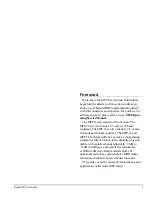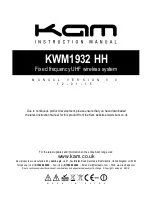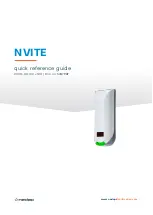
• Internal/External Clock
Selects between internal or external word clock source
as the master clock source for the system
• Sample Rate
Selects the sample rate when using internal clock.
Your choices are: 44.1kHz, 48kHz, 88.2kHz, 96kHz,
176.4kHz, 192kHz.
• External Clock Source
(ext. clock only)
Select from: ADAT, or S/PDIF as an external sample
clock source.
4 - The PatchMix DSP Mixer
The Session
34
Creative Professional
The System Settings include the following:
Note:
if set to
“External” without an
external clock present,
PatchMix DSP defaults to
the internal 48kHz clock
rate.
Using External Clock
Whenever you are using any digital I/O such as ADAT or S/PDIF, one of the digital
devices MUST supply the master clock to the others. This master clock runs at the
system sample rate and can be
embedded into a data stream such as S/PDIF or ADAT
.
Common symptoms of unsynced digital audio include, random clicks or pops in the
audio or failure of the digital stream to be recognized.
Always check for the presence
of the “LOCKED” indicator whenever you are using a digital interface.
If an External Clock is interrupted or switched after the Session has been created
(except between 44.1k <-> 48k), the “LOCKED” indicator will be extinguished and
PatchMix will attempt to receive the external data. The two units are NOT sample
locked however, and you should correct this condition to avoid intermittent clicks in
the audio.
I/O Settings
You can set the level (-10dBV or +4 dBu) for each pair of analog outputs and the input
gain setting for each pair of analog inputs.
An output setting of +4 provides the most output and is compatible with professional
audio gear. Balanced output cables also provide a +6dB hotter signal than unbalanced
cables when used with balanced inputs.
Do NOT use balanced cables unless your
other gear has balanced inputs.
See
“Cables - balanced or unbalanced?”
in the
Appendix for more information.
Comparison of -10dBV & +4dBu Signal Levels
0 dBV = 1V RMS 0dBu = .777V RMS
Input too weak?
Use -10 Input setting.
Output too weak?
Use +4 Output setting
An input setting of -10 is compatible with consumer audio gear and works best with
low level signals. (-10dBV is approximately 12dB lower than +4dBu.) Choose the
setting that allows you to send or receive a full scale signal without clipping.
Setting correct input and output levels is important!
You can measure the level of an
input by inserting a meter into the first effect location in the strip. Adjust your external
equipment outputs for the optimum signal level. See
“To Set the Input Levels of a
Strip”
for details.















































